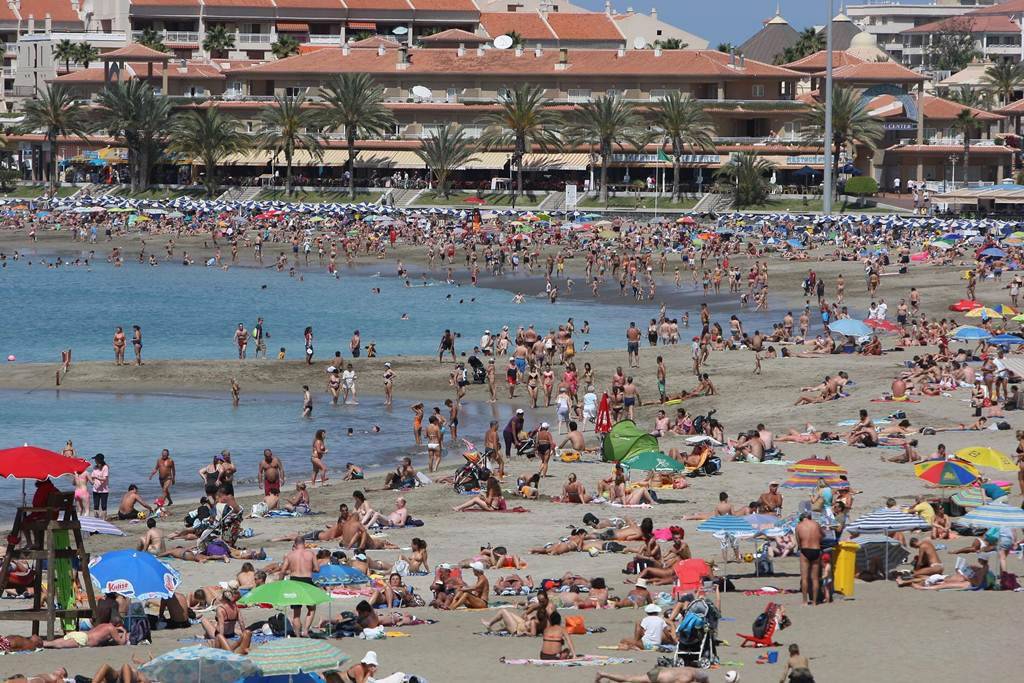Canary Islands close 2024 with nearly 18 million tourists, led by British visitors
- 15-01-2025
- National
- Canarian Weekly
- Photo Credit: Stock image
The Canary Islands recorded an extraordinary year in 2024, with nearly 18 million visitors, a combination of international and national tourists. According to refined data from the Canary Islands government and airport passenger statistics (which registered 52.8 million travellers), the archipelago welcomed 15.5 million international tourists in 2024.
This represents an impressive 10% increase compared to the previous year, translating to nearly 1.4 million more foreign visitors. On average, the islands saw an additional 120,000 tourists per month.
Adding to this, 1.8 million domestic visitors arrived from mainland Spain in the first eleven months of the year—a 2% increase year-on-year, according to Frontur. Estimations for the full year suggest approximately 2 million domestic tourists visited, bringing the total number of visitors to nearly 18 million.
Tenerife Leads the Archipelago's Tourism Boom
Tenerife remains the dominant destination within the Canary Islands, attracting over 6.2 million international tourists and more than 900,000 domestic visitors, totalling over 7 million in 2024.
Gran Canaria followed with nearly 4 million international tourists and 550,000 domestic visitors, reaching a combined total of approximately 4.5 million.
Other islands also saw significant visitor numbers. Lanzarote welcomed just over 3.3 million tourists, the majority (around 3 million) being international. Fuerteventura drew approximately 2.5 million visitors, including 2.3 million foreigners. La Palma recorded 120,000 visitors.
British Tourists Dominate the Market
The UK solidified its position as the archipelago's most significant tourism market, accounting for over 40% of all international arrivals. Nearly 6.3 million British tourists visited in 2024, marking an increase of over half a million compared to 2023. This figure is double that of German visitors, the second-largest market, which brought nearly 3 million tourists.
British visitors' dominance was particularly pronounced in Lanzarote, where they outnumbered German tourists sixfold (1.6 million compared to 275,000). In Tenerife, British tourists tripled German arrivals, with 2.8 million compared to 864,000. Meanwhile, Gran Canaria and Fuerteventura saw a more balanced distribution, each hosting around a million tourists from these markets.
Concerns Over Dependency on British Tourism
José María Mañaricua, president of the Federation of Hospitality and Tourism Entrepreneurs of Las Palmas (FEHT), expressed concerns about the archipelago's heavy reliance on British tourism. While the UK market has been a major driver of growth, Mañaricua cautioned that any downturn in this market could pose significant challenges.
He also highlighted a 10% decline in overnight stays compared to 2017, despite the surge in tourist numbers. The growth of non-traditional accommodations, such as holiday rentals, contributed to this trend. While this shift is not problematic, Mañaricua urged the industry to monitor its implications carefully.
Regional Market Performance
While most markets showed growth, three countries - Sweden, Denmark, and Portugal - recorded fewer visitors compared to 2023. Nonetheless, the Canaries maintain their status as a top destination, drawing international and domestic travellers alike.
The Canary Islands' exceptional performance in 2024 underscores its enduring appeal as a tourist destination. However, industry leaders stress the importance of diversifying markets to ensure stability and resilience in the face of potential shifts in international travel trends.
Other articles that may interest you...
Trending
Most Read Articles
Featured Videos
A Vision of Elvis Tenerife Promo
- 10-05-2025
TEAs 2025 Highlights
- 17-11-2025

























































